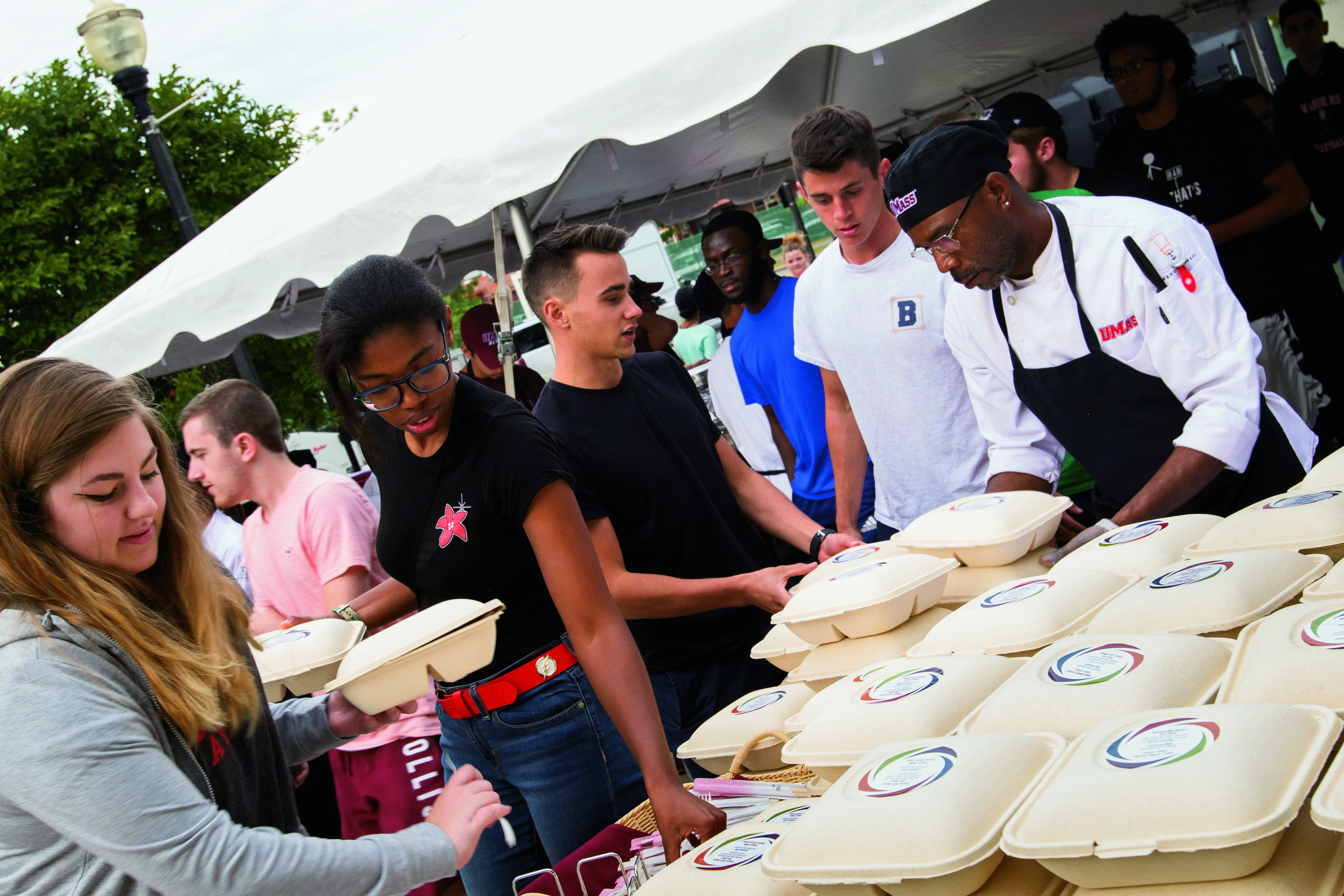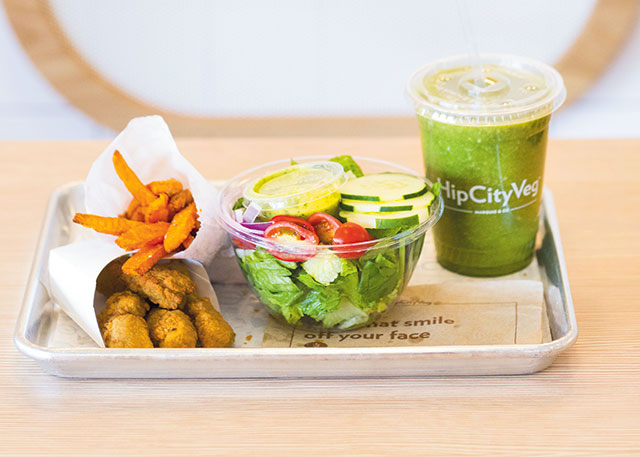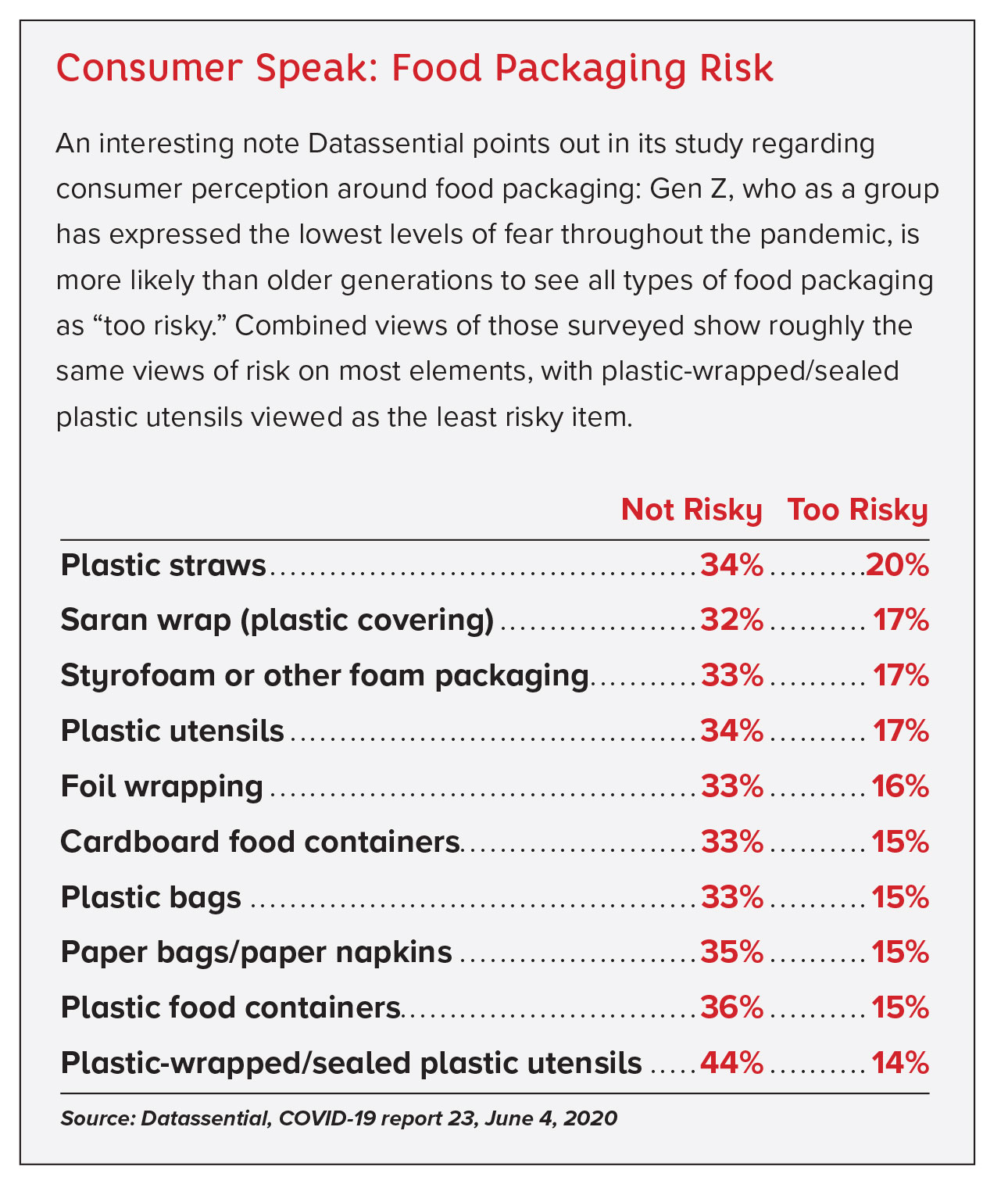As takeout options continue to increase, eco-friendly packaging options come into question in terms of balancing sustainability goals with costs, availability and new normal realities.
Even before the advent of the novel coronavirus, many foodservice operations were moving toward a different business model. The rise in popularity of delivery services — whether third-party or in-house — has made operators retool their business strategy toward one where off-premises dining plays a much bigger role. As part of this new model, many operators have taken a fresh look at their takeout packaging, and some are choosing eco-friendly options. Reflecting the increased interest in these items, the National Restaurant Association’s “What’s Hot 2020 Culinary Forecast” listed eco-friendly packaging as the No. 1 overall restaurant trend for the year.
The college and university segment has been one of the major adopters of eco-friendly packaging, a decision often driven by the university administration. “We have sustainability built into our strategic vision,” says Garett DiStefano, director of Dining Services, University of Massachusetts-Amherst.
 UMass-Amherst students often take food back to dorm and reheat it for dinner. Dining services keep that in mind when selecting packaging options to ensure it will hold up to reheating.
UMass-Amherst students often take food back to dorm and reheat it for dinner. Dining services keep that in mind when selecting packaging options to ensure it will hold up to reheating.
The move toward sustainable packaging was just one part of an all-campus initiative started almost a decade ago for the University of Michigan-Ann Arbor. The initiative set sustainability goals for waste, energy, water, culture and food, according to Keith Soster, director of Sustainability, Student Engagement, and Training and Development for Michigan Dining, the university’s foodservice arm. “Being that we’re in dining, we can make an impact to all five of those broad categories,” Soster says.
With the majority of their students off-campus for the near future, both UMass-Amherst and the University of Michigan have moved to a grab-and-go setup for all foodservice on campus but are still using eco-friendly items for takeout.
 The University of Michigan continues to use eco-friendly packaging per its sustainability initiatives.
The University of Michigan continues to use eco-friendly packaging per its sustainability initiatives.
The cost of eco-friendly packaging “can be anywhere from 20% to 50% higher than regular packaging,” says Joel Feigenheimer of RealEats Consulting in Hollywood, Fla.
However, eco-friendly packaging can be a way to reinforce a brand’s message, says Claire Koelsch Sand, consultant and owner of Packaging Technology and Research in Stillwater, Minn. “Certain companies have built their brands on sustainability and sustainable packaging,” she says. “They’ve said, ‘We’re not going to look at our cost structure; we’re going to look at what we want to do first.”
HipCityVeg is one of those companies. The seven-unit fast-casual chain based in Philadelphia specializes in plant-based menu items such as tempeh burgers and tofu wraps. “The packaging that goes out to guests is all compostable items,” says Michelle LaVigne, vice president of operations. “We spend a considerable amount more than [for] your everyday plastic or Styrofoam.”
Chipotle Mexican Grill has always put sustainability at the center of its business. But for a chain of its size — 2,600-plus units — the cost of eco-friendly packaging is a major factor. Caitlin Liebert, head of sustainability for the chain, says that there’s value in using off-the-shelf eco-friendly packaging, but “in addition to sustainability, ease of operation and customer experience are a priority,” she says. For that reason, Chipotle uses a combination of both customized and noncustomized eco-friendly packaging.
In the past, finding eco-friendly materials that perform as well as traditional materials was a challenge. Nowadays, Feigenheimer notes, “technology is such that most eco-friendly products perform easily as well as traditional products.”
Product quality has improved, Soster agrees. “When we first started looking at compostable products, I would put food in a container and let it sit there for an hour, and it would seep. They’re a whole lot better now.”
While the ability to hold food longer is critical for restaurants offering delivery, it has now also become important for the college segment as it moves from sit-down to takeout operations for the foreseeable future. “A lot of kids come in to grab their lunch, and they grab their dinner, too,” says DiStefano in reference to how students use dining services at UMass-Amherst. “We want to make sure that the containers we use are able to hold their food so when they are back in the dorm and want to reheat it for dinner, it’s still going to hold.”
While the selection of eco-friendly products on the market has increased over the past few years, it can be expensive. “Newer products have come on the market and been really great,” LaVigne notes, but some gaps still remain. “Like our clamshell, for example. We’ve been in the market for a compostable clamshell that’s not going to cost us an arm and a leg.”
There can also be a learning curve with some eco-friendly products. For example, Feigenheimer points to a Miami hotel that chose corn-resin cups to use for its poolside beverage service and then stored the cups outside. “Corn-resin cups are supposed to biodegrade,” he says, “and the sun melted them. The staff and management simply weren’t aware that these need to be kept inside.”
Reusable? Perhaps, Perhaps Not
In the overall category of eco-friendly packaging, reusable products represent a fairly small percentage of products. Before the coronavirus pandemic, reusables were gaining some traction in foodservice, especially at bring-your-own-mug coffee stations. But now, their usage has been placed on hold in most municipalities. Whether they’ll return to foodservice remains a question. “I hate to make nasty predictions, but I think they’re going to be out for a while,” says Sand.
As recently as six months ago, Distefano says UMass-Amherst had been looking into a program with reusable food containers, but “fast-forward to now — I don’t see that being a possibility for quite some time,” he says.
Reusable containers also presented a unique problem for some colleges and universities with unlimited meal plans, Soster points out. “You can go in and out [of the dining halls] all day long,” he says. “We don’t want students filling up clamshells and taking them out and feeding all their friends.”
The Upsides
In addition to the ecological benefit of greener packaging, it can also bring a boost in terms of customer perception — if the operator communicates the effort to customers.
At Chipotle, Leibert says, “some of our packaging includes material and diversion information such as ‘compostable’ or ‘made from recycled material.’ We also have detailed signage posted regarding compost and recycling for customers at our waste stations, where applicable.”
Promoting eco-friendly efforts at HipCityVeg is an important way to help grow the brand, LaVigne says. “We have it everywhere from the menu to the website. We have it on our compostable stickers; we have it on part of our packaging.”
 HipCityVeg is researching tamper-proof options for it’s eco-friendly packaging to offer guests a greater sense of food safety.
HipCityVeg is researching tamper-proof options for it’s eco-friendly packaging to offer guests a greater sense of food safety.
Using earth-friendly packaging can have benefits both from a social responsibility standpoint and a staff morale standpoint, Feigenheimer says. It can also have a halo effect on employees, particularly with Millennials. “They like to see that, and it’s something that we should be doing,” he says.
No Tampering Allowed
 Food Packaging RiskUntil recently, tamper-proof packaging was seen primarily on pharmaceuticals and household food items. But as third-party delivery providers continue to prevail, order tampering has become a consideration for restaurant operators. In fact, 28% of delivery drivers admitted to taking food from an order at least once, according to a 2019 study by broadline distributor US Foods.
Food Packaging RiskUntil recently, tamper-proof packaging was seen primarily on pharmaceuticals and household food items. But as third-party delivery providers continue to prevail, order tampering has become a consideration for restaurant operators. In fact, 28% of delivery drivers admitted to taking food from an order at least once, according to a 2019 study by broadline distributor US Foods.
While many tamper-evident packaging items are plastic-based, operators can choose from some eco-friendly (or at least eco-friendlier) options, too. For example, some paper bags now feature a tamper-evident strip across the top, while some recycled paperboard boxes include closing tabs that “lock.” Chipotle introduced tamper-evident packaging seals, says Leibert, who emphasizes it is “on every bag for delivery or pickup orders.”
HipCityVeg uses compostable stickers to seal its bags. The chain is researching other tamper-proof options, says LaVigne, who adds that tamper-proof packaging gives “a sense of security from the guest side and from our side as well.”




